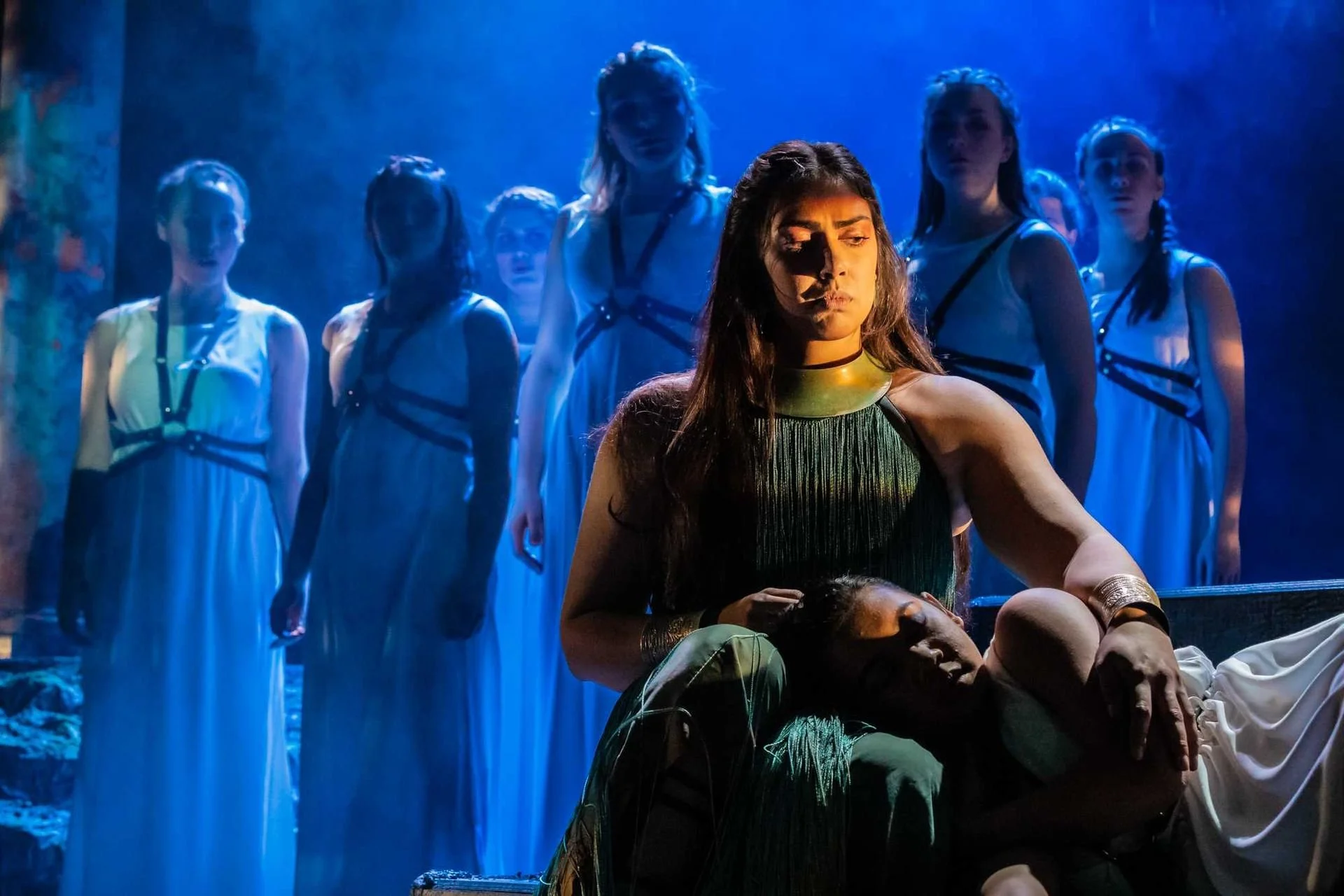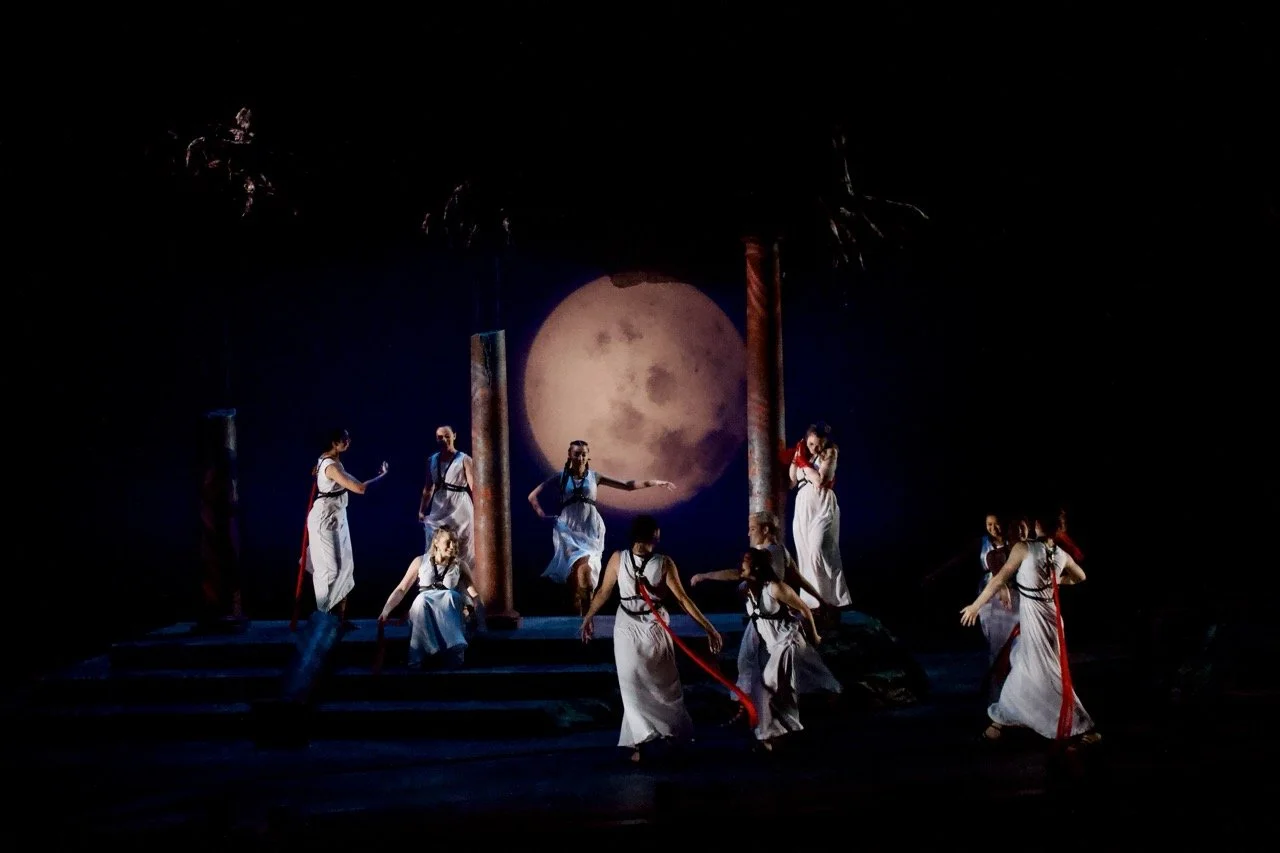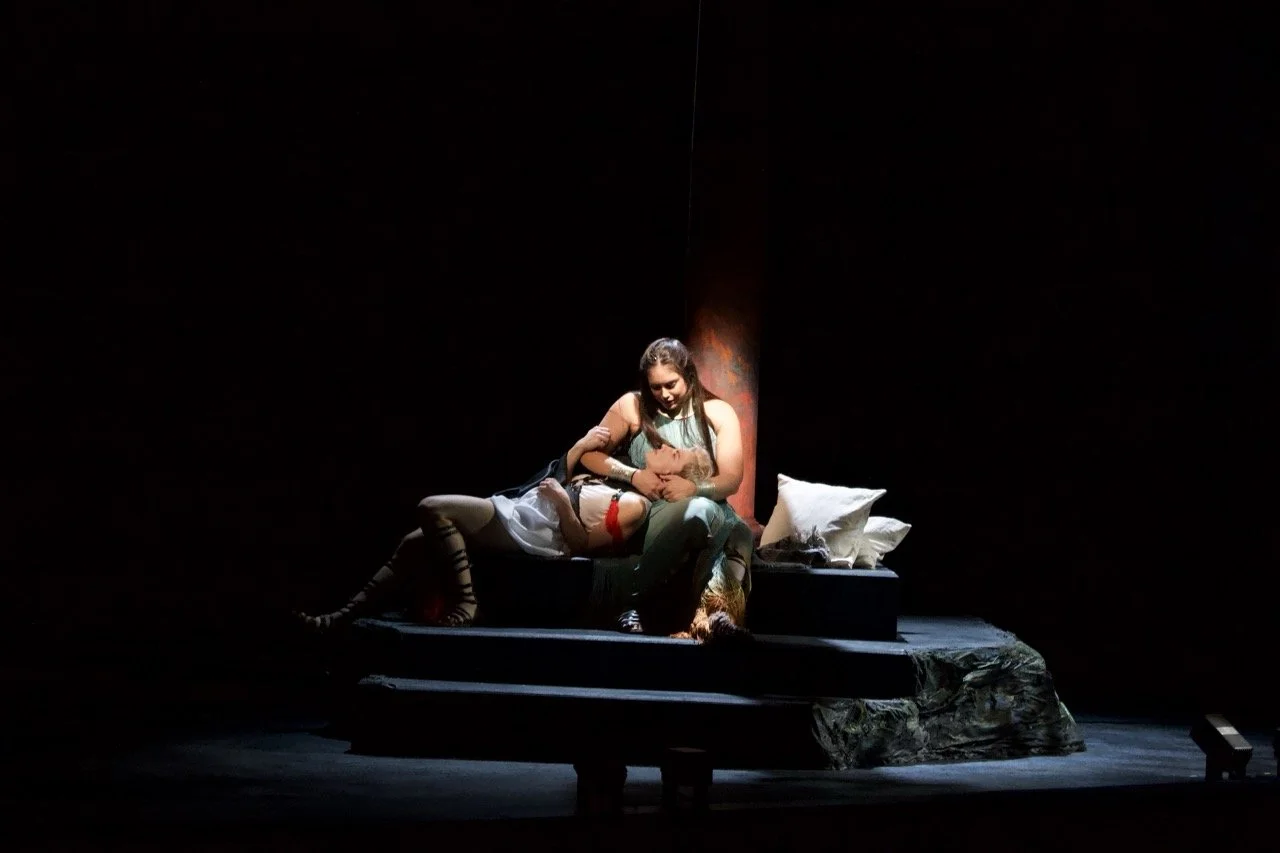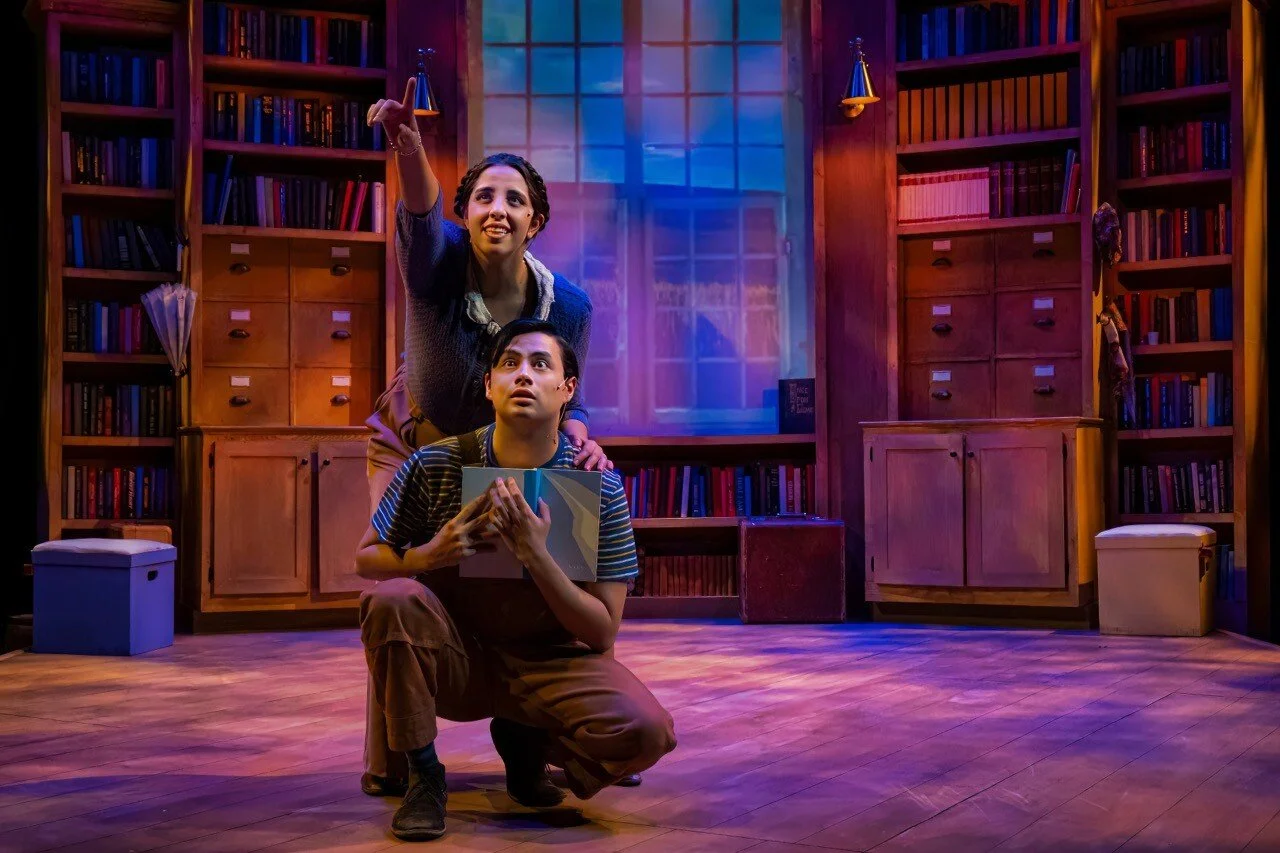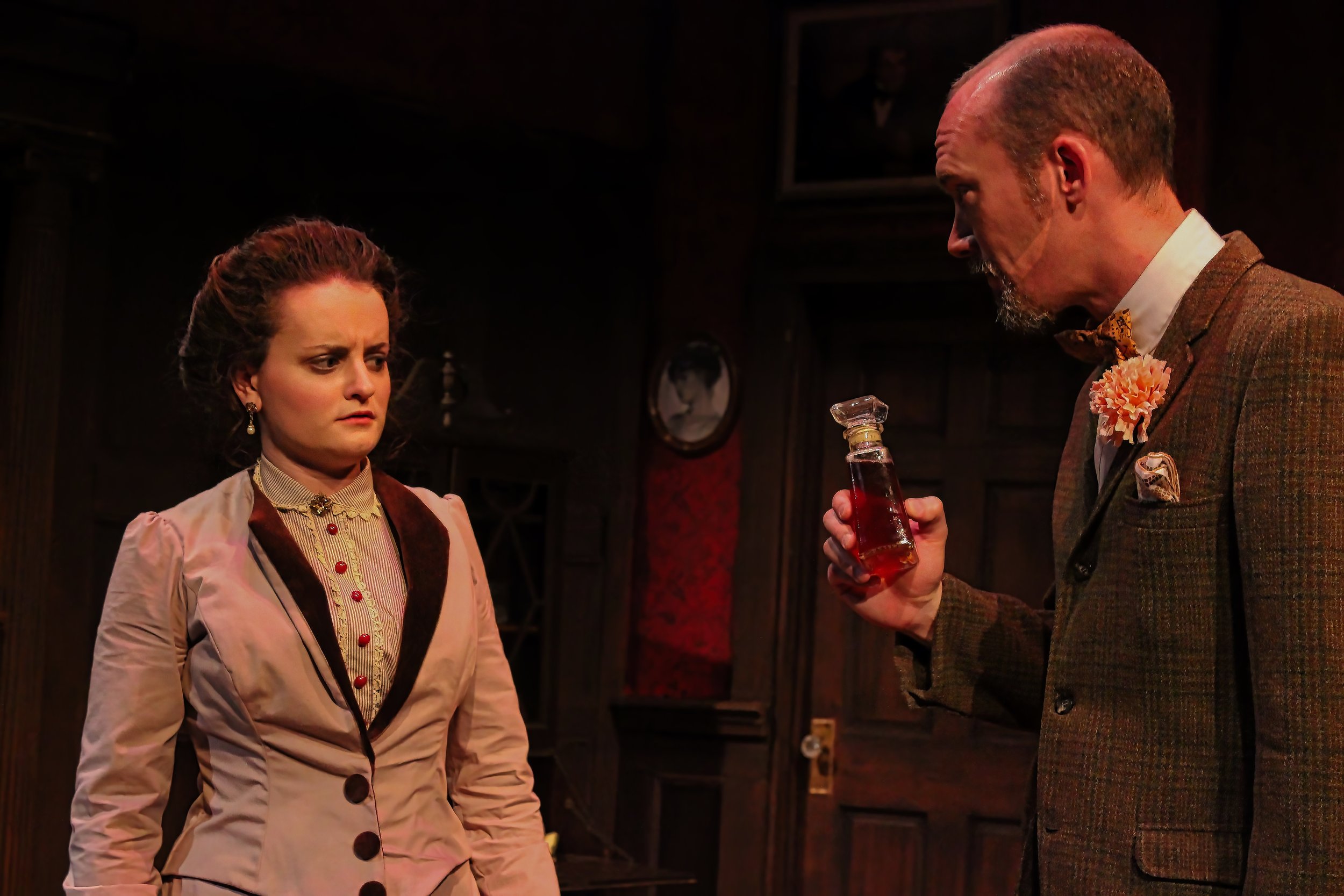The Penelopiad

University of California, Irvine — 2020
Design Notes
For The Penelopiad, I approached the scenic design as a bridge between myth and modernity—honoring the ancient source while locating its themes in the present. Working from Margaret Atwood’s retelling, the space centers Penelope’s voice in a world both timeless and immediate.
The architecture borrows the silhouettes of ruined Greek temples—columns, steps, fractured masses—reimagined in raw concrete and distressed steel. This material juxtaposition underscores the harshness of Penelope’s world and reminds us that the maids’ struggles echo across centuries.
A stark palette of slate, rust, and ash creates gravity. Elevated platforms and fragmented stairs allow dynamic movement while reinforcing imbalance and eroded power. Above, a netted scrim—part weaving, part snare—hangs in torn layers, evoking Penelope’s loom and the systems that bind the women.
The design is intentionally spare, forcing focus onto ensemble storytelling. As the maids become chorus, witness, and memory, the stage shifts—from courtroom to island to domestic prison—without changing a single flat. Minimalism gives breath while quietly reinforcing violence, erasure, and strength.
Ultimately, the set is both ruin and reckoning: a place where forgotten voices demand to be heard and ancient myths are stripped bare under modern light.
Creative Team

Brandon PT Davis is a scenic and experiential designer whose work spans theatre, themed entertainment, and education. With more than 130 productions to his name, he explores how technology, storytelling, and collaboration shape the art of scenic design. His blog, Scenic Insights, reflects on design philosophy, process, and emerging tools while sharing resources for students and professionals alike.


